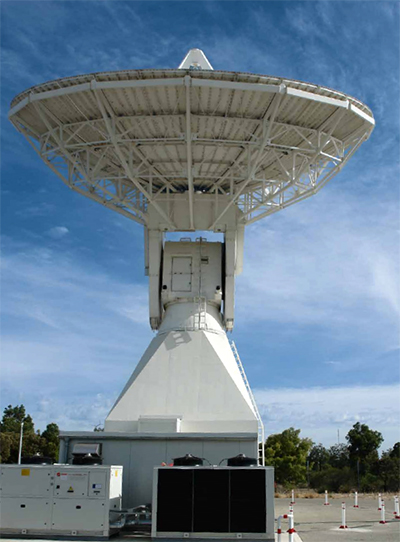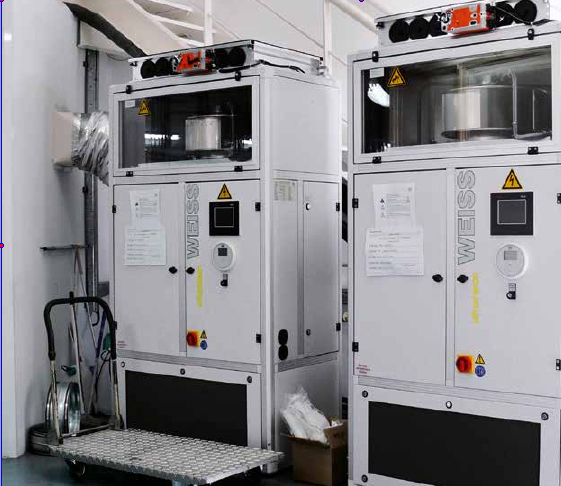Climate control systems with redundant operation for satellite and space monitoring.

Since the start of the space age, European countries have been active participants in space fight. Since 1975, ESA has controlled the development of European activities in space. By bundling the resources of its 20 member states, ESA facilitates the implementation of programmes and activities. Its responsibilities also include monitoring of all satellites and space missions with the help of its worldwide ground systems. “If the climate control in the ground systems fails, then the sensitive electronics also fail. The antennas cannot be operated and important data are lost,” explains Jürgen Süßlin, Technical Customer Consultant in the Defence Sector of Weiss Umwelttechnik. “For this reason, we built a device and climate monitoring system that achieves an availability of 99.95 %, which is extremely high".
For about 30 years Weiss Technik have been developing, building, maintaining, repairing and caring for the climate control and cooling systems of the ESA ground stations worldwide. “When we buy products from Weiss Technik, we simply know that they work reliably,” explains Filippo Concaro, manager of the European Space Operation Centre (ESOC) of ESA. “The quality simply speaks for itself and has done so for decades.” The electronics in the ground stations are very complex and very sensitive to temperature fluctuations. High heat loads must be constantly and safely conducted away through cooled air and directly with cooling fluids.
However, the climate conditions in Australia are different from those in northern Sweden or Argentina. This is a challenge for the climate control technicians who adapt the respective systems individually to local humidity, heat, cold, dust and wind. In order to design and construct the systems to be as safe and reliable as possible, the climate control and cooling systems, as well as the systems controls, are always installed twice.
100% redundant operation gives ESA decisive benefts:It allows for absolutely reliable operation of the antenna and extremely low downtime in case of maintenance and repair work. Another plus are the regulated dehumidifcation and overpressure in the antenna, which ensure optimal protection of the electronic equipment.

For the ground station of the Deep Space Antenna in the Argentinian Malargüe, Weiss Technik used the latest generation of compact climate control devices, which was developed especially for universal use in diverse climate conditions. These devices ensure that both the electronic equipment in the racks inside the antenna and the room are climate controlled. The devices with integrated control cabinet have full climate control for heating, cooling and humidifcation/dehumidifcation. High operating reliability and low energy costs are additional benefits. This is achieved by the efficiency-optimised high-performance ventilators and very large heat exchanger surfaces with low pressure loss. In addition, our built-in compact climate control devices were designed to be easy to service and easy to clean.
The cooling of the climate control system and the fluid-cooled electronic equipment are ensured by
correspondingly dimensioned cooling water tanks. Regulation valves ensure very constant temperatures in the fluid circulatory system.
The total system is centrally-controlled and monitored on site. This control concept was also designed and implemented by Weiss Technik. In case of disruptions or failures, the system automatically switches to the redundant system (stand-by) in order to continue the operation of the antenna. Status reports and error messages are sent to a super-ordinate management system of ESA. This way, ESA is able to monitor our Weisstechnik Climate and Cooling System via ESOC in Germany and ensure the availability of the antenna for their missions.
Since 2006, Weiss Technik has converted almost all ground stations with 15-metre-high antennas to the new reliable redundancy concept. The new system for the 35-metre-high Deep Space Antenna in Malargüe was also developed and installed based on the concept of the 15-metre antennas. The system was started up in 2012 and handed over to ESA. Since then, Weiss Technik's service department has been managing this and all other systems.